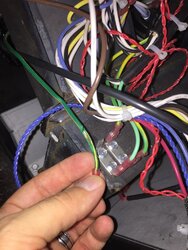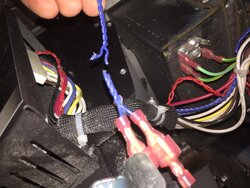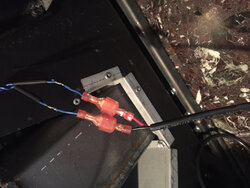I have a Harmon p52i... I tried pushing my insert back in the fire place and I did some damage to the wires (right side of insert)
1. Green wire is not cut in half, however I skimmed the outside sleeve. Looks like it belongs to my temperature probe(I think) can I just electric tape it? Or does it need to be replaced?
2. This wire is cut in half... two wires. Can I stripe them then connect them back and eletric tape it or does it have to be replaced?


Sent from my iPhone using Tapatalk
1. Green wire is not cut in half, however I skimmed the outside sleeve. Looks like it belongs to my temperature probe(I think) can I just electric tape it? Or does it need to be replaced?
2. This wire is cut in half... two wires. Can I stripe them then connect them back and eletric tape it or does it have to be replaced?


Sent from my iPhone using Tapatalk


